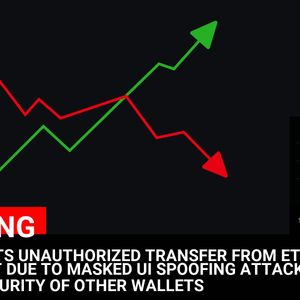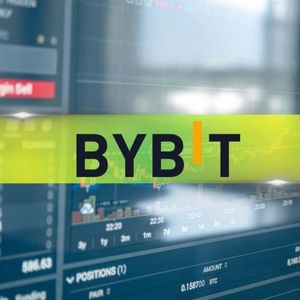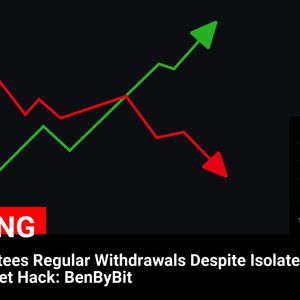The Bitcoin mining landscape is undergoing a significant shift, and the spotlight is firmly on U.S.-listed companies. Are you ready to uncover how these industry giants are rapidly expanding their influence? Recent reports from Bernstein, a reputable U.S.-based research and brokerage firm, reveal a compelling trend: American publicly traded Bitcoin miners are not just participating in the network – they are aggressively taking charge. Why Are US-Listed Bitcoin Miners Surging in Hashrate? The numbers speak volumes. Just a year ago, these US-listed Bitcoin miners accounted for a solid 20% of the total Bitcoin network hashrate. Fast forward to today, and that figure has dramatically jumped to a commanding 29%! This impressive leap, as highlighted by CoinDesk and Bernstein’s analysis, signifies more than just growth; it represents a consolidation of power within the Bitcoin ecosystem. But what’s fueling this explosive growth? It boils down to a potent combination of strategic advantages that these companies are leveraging effectively: Access to Capital: Being publicly listed provides these miners with unparalleled access to capital markets. They can raise funds more easily through equity and debt offerings, enabling them to invest heavily in infrastructure and expansion. Abundant Land and Power Resources: The U.S., particularly regions with favorable regulatory environments and energy infrastructure, offers access to vast land and relatively cheaper power resources crucial for energy-intensive Bitcoin mining operations. Aggressive Expansion Strategies: Companies like IREN, CleanSpark, Riot Platforms, and MARA Holdings are not sitting idle. They are actively pursuing aggressive expansion strategies, deploying new mining rigs and scaling their operations at a rapid pace. Decoding the Hashrate: What Does it Mean for Bitcoin? For those new to the crypto world, hashrate might sound like technical jargon. In simple terms, hashrate is the total computational power being used to mine Bitcoin and secure the network. A higher hashrate generally translates to: Increased Network Security: A more robust hashrate makes the Bitcoin network significantly more resistant to attacks. The higher the computational power, the more difficult and expensive it becomes for malicious actors to compromise the blockchain. Faster Transaction Processing (Potentially): While not directly proportional, a higher hashrate supports the network’s ability to process transactions efficiently. It reflects the overall health and activity of the Bitcoin network. Greater Mining Decentralization (Ideally): While the concentration in US-listed miners is a trend to observe, a globally distributed and growing hashrate is generally seen as positive for Bitcoin’s decentralization in the long run. Who are the Key Players in this Market Share Grab? Bernstein’s report specifically calls out a few names that are leading this charge in expanding their market share of the Bitcoin hashrate. Let’s take a closer look at these mining powerhouses: IREN (Iris Energy): Known for its sustainable energy focus and rapid growth, Iris Energy has been consistently expanding its mining capacity. CleanSpark: CleanSpark is another notable player, recognized for its efficient operations and strategic acquisitions in the mining space. Riot Platforms: Riot Platforms stands out as one of the largest publicly listed Bitcoin mining companies, with significant investments in infrastructure and mining rigs. MARA Holdings (Marathon Digital Holdings): Marathon Digital is another major player, consistently ranking among the top Bitcoin mining companies by hashrate. These companies are not just passively participating in the Bitcoin network; they are actively shaping its landscape through their substantial computational power and strategic decisions. The Rise of US Bitcoin Mining: Benefits and Challenges The increasing dominance of US-listed Bitcoin miners brings both potential benefits and challenges to the broader crypto ecosystem: Benefits: Increased Legitimacy and Institutional Investment: Publicly listed miners operating under U.S. regulations can enhance the legitimacy of Bitcoin mining as an industry, potentially attracting more institutional investment into the sector. Transparency and Accountability: Public companies are subject to greater transparency and reporting requirements, which can foster trust and accountability within the Bitcoin mining industry. Job Creation and Economic Growth in the US: The growth of Bitcoin mining in the U.S. can lead to job creation in various sectors, from technology and energy to finance and infrastructure. Challenges: Centralization Concerns: While geographical diversification can be positive, a concentration of hashrate within a few large, publicly listed companies raises concerns about potential centralization of mining power. Regulatory Scrutiny: As the industry grows, increased regulatory scrutiny is inevitable. Navigating evolving regulations in the U.S. will be crucial for these miners. Energy Consumption and Sustainability: Bitcoin mining’s energy consumption remains a significant concern. US miners will need to increasingly focus on sustainable energy sources and efficient mining practices to mitigate environmental impact. Actionable Insights: What Does This Mean for You? Whether you are a seasoned crypto investor, a curious observer, or someone considering entering the Bitcoin mining space, this trend has implications for you: For Investors: Keep an eye on the performance of publicly listed Bitcoin mining companies. Their growth and strategies can offer insights into the overall health and future direction of the Bitcoin market. For Bitcoin Enthusiasts: Understand the dynamics of hashrate distribution and its impact on network security and decentralization. Engage in discussions about the future of Bitcoin mining and its evolution. For Aspiring Miners: The landscape is becoming more competitive. Consider the advantages and challenges of competing with large, well-capitalized players. Niche strategies, focusing on renewable energy, or specialized hardware might be avenues to explore. Conclusion: The Evolving Landscape of Bitcoin Mining The rise of US-listed Bitcoin miners to control nearly 30% of the network hashrate is a powerful testament to their strategic execution and the evolving dynamics of the Bitcoin mining industry. This surge in computational power from American companies marks a significant chapter in Bitcoin’s journey. As these miners continue to expand and innovate, their influence on the network’s security, decentralization, and overall ecosystem will only intensify. The world of Bitcoin mining is dynamic and full of potential, and the U.S. is rapidly becoming a central stage for its future. To learn more about the latest crypto market trends, explore our article on key developments shaping Bitcoin price action.



















